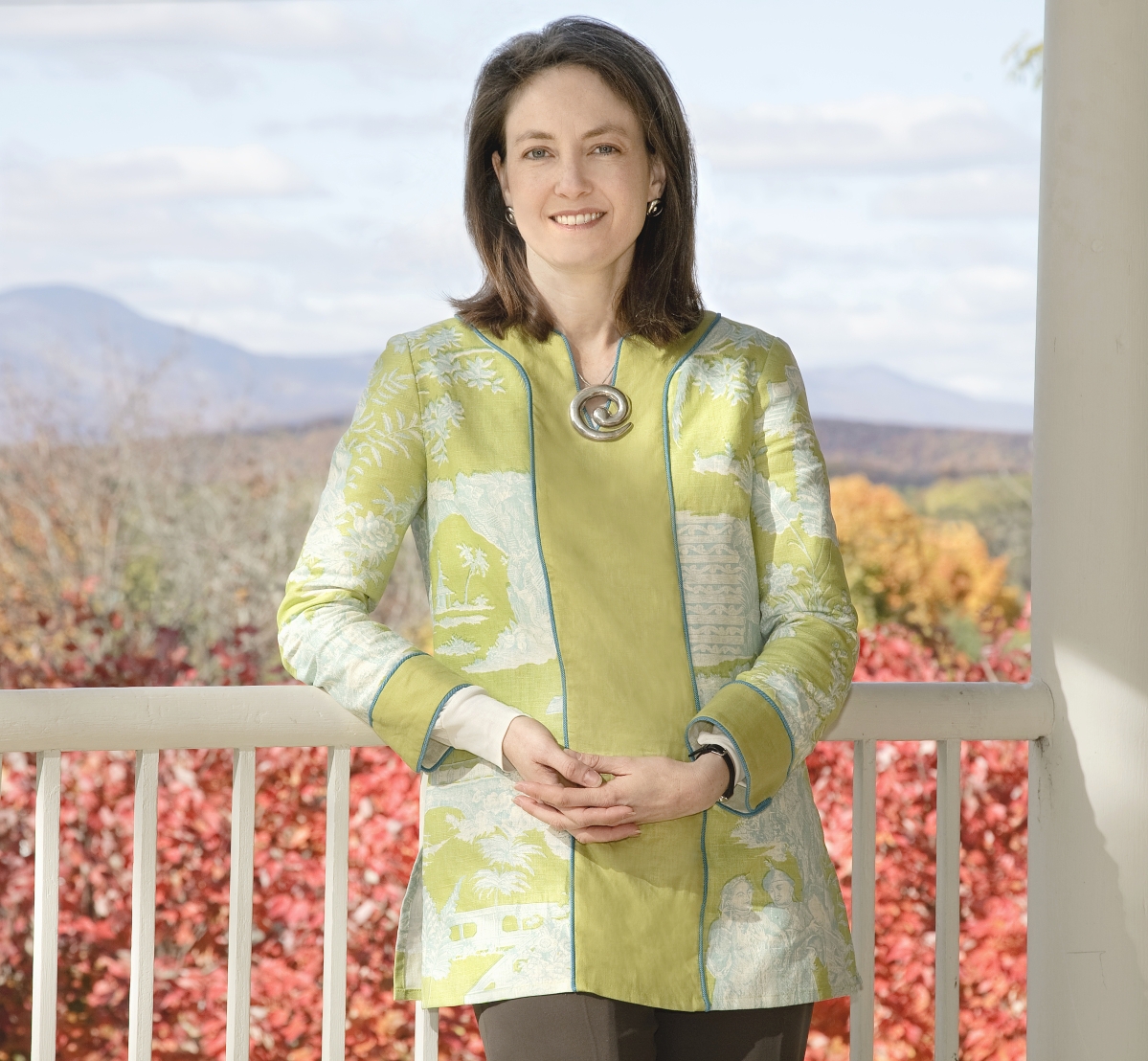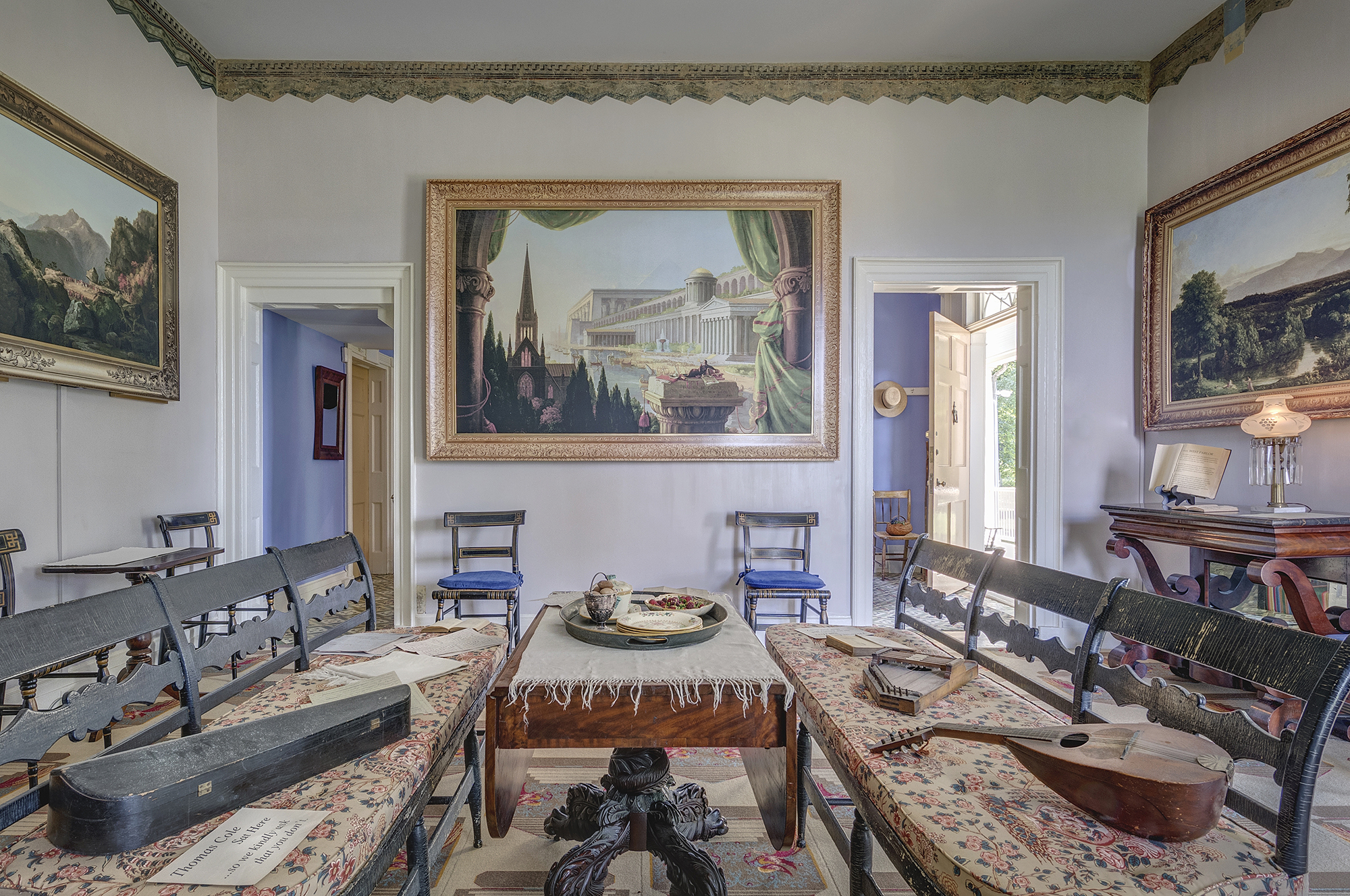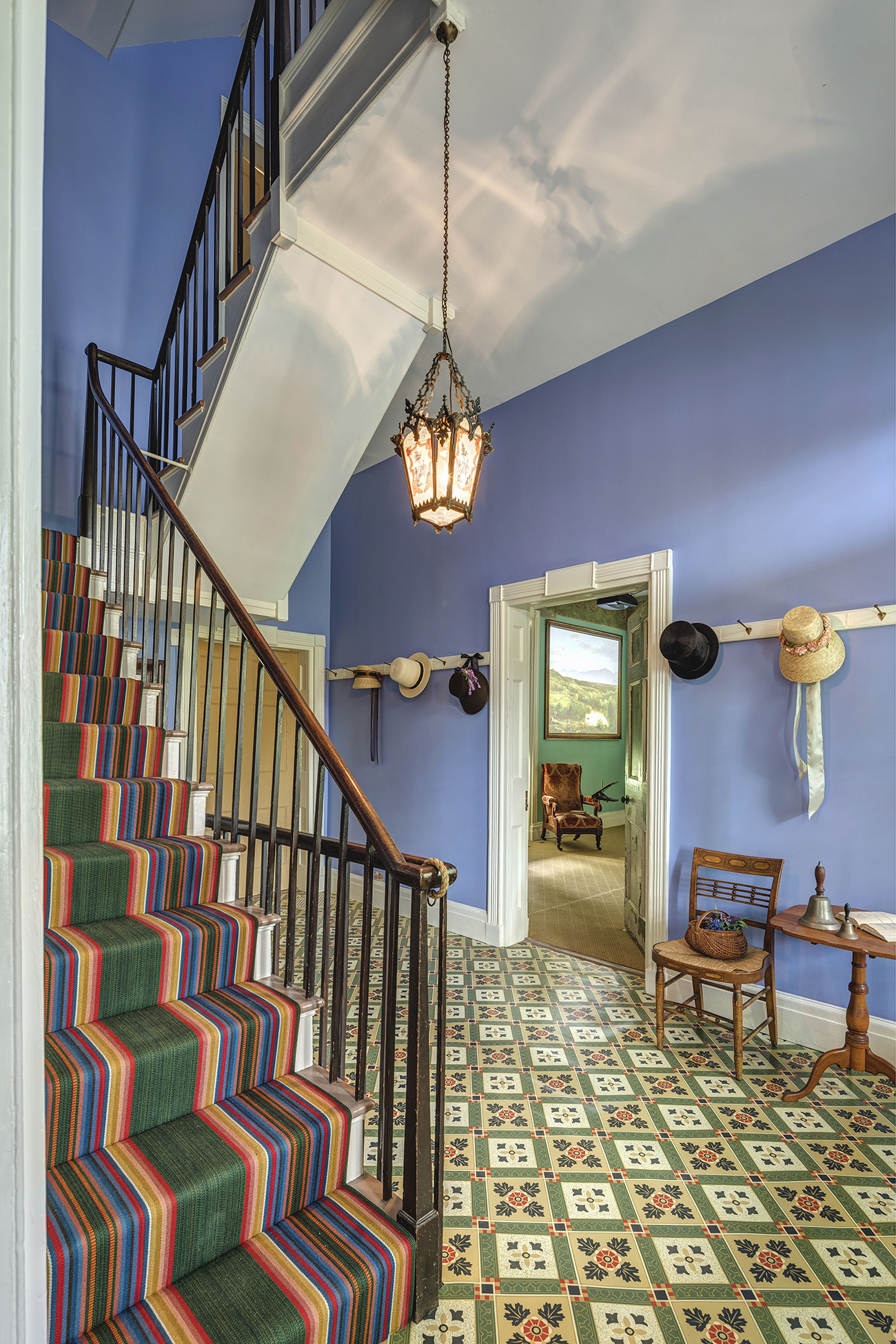When the Institute of Museum and Library Services (IMLS) announced that the Thomas Cole National Historic Site was among 30 finalists for the 2021 National Medal for Museum and Library Service – one of just 15 museums nominated across the United States to be selected as a finalist for the award – the site’s executive director Elizabeth “Betsy” B. Jacks, was understandably elated. That’s because the medal is the nation’s highest honor given to museums and libraries that demonstrate significant impact in their communities. “To be nominated as a finalist is an extraordinary honor for the Thomas Cole National Historic Site,” said Jacks at the time. We caught up with her as the site marks its 20th anniversary this year to find out how the institution is working to further its mission.
What is the mission of the site?
The site’s mission is to preserve and interpret the home and studios of Thomas Cole (1801-1848), the founder of the art movement known as the Hudson River School of landscape painting. Cole’s profound influence on America’s cultural landscape inspires us to engage broad audiences through innovative educational programs that are relevant today.
The themes that Thomas Cole explored in his art and writings – such as landscape preservation, the need for public art museums and our conception of nature as a restorative power – are historic and timely, providing the opportunity to connect to audiences with insights that are highly relevant to their own lives. We develop a variety of experiences for audiences to explore these cross-century themes, including art exhibitions, digital installations, public programs, scholarly publications, outdoor ventures, online resources and more.
The IMLS announcement coincided with your launch of the site’s newest program. Can you describe what “Spring Lights,” which ended in May, was all about and how it was received?
Spring Lights is a good example of how this organization is creative, flexible and persistent. We wanted to create a safe, accessible, in-person experience for audiences seeking thought-provoking cultural experiences, before things started to open up more. Spring Lights brought together a terrific group of creatives to invent an immersive sound and light experience exploring Thomas Cole’s landscape paintings and writings on nature, in the landscape where he lived and worked. It was important to us that everyone in the local community was able to visit and experience Spring Lights, regardless of their financial means. Thanks to underwriters, including local community members and businesses, we were able to offer free community Fridays every Friday during the run of Spring Lights.
You’ve also instituted a free K-12 program for students. Can you tell us how that came together and what its lesson plans comprise?
The Thomas Cole Site has been offering free programming to K-12 students for more than a decade. We work with local and regional teachers to grow and develop the initiative. Our programs use American art to teach American history and other curriculum themes such as the industrialization that swept this country during Cole’s time, thereby ensuring that art has a place in the classroom. We engage students through creative activities and active learning methods. The program has grown to include programs at the historic site, programs in regional classrooms and programs live on Zoom. Additionally, the lesson plans we developed are posted on our website for free, along with other learning activities, at thomascole.org/teacherresources. We’re also in the beginning phase of creating a digital education game that can be used by teachers and students across the country, with support from the Warner Foundation and the National Endowment for the Humanities.
How has the past year’s pandemic affected the program?
Following conversations with teachers, we successfully transitioned our school programs into the virtual space and continued connecting with students live on Zoom.
Tell us a bit about what can be seen in the 1815 Main House, Cole’s 1839 Old Studio and the reconstructed 1846 New Studio building.
Visitors to Thomas Cole’s 1815 Main House will find bold restored interiors, originally designed by Thomas Cole himself, infused with hidden digital storytelling installations that bring to life the artist’s ambitions and environmental concerns. The interiors include original decorative wall painting by Thomas Cole that was recently discovered beneath layers of modern paint. The Main House also houses the site’s robust collection of original paintings and objects, many of which are featured in a newly reinterpreted and reinstalled collection-based exhibition titled, “Thomas Cole’s Creative Process,” made possible by the Henry Luce Foundation.
The 1839 Old Studio is a magical space that feels as though the artist has just stepped out. Hudson Valley light streams through a northern window onto Thomas Cole’s original easels, and his paint brushes are at the ready for his next masterpiece.
The New Studio building is one of the only standing examples of Thomas Cole’s skills as an architect. He originally designed and built the structure in 1846, but it was demolished in the 1970s before the site became a museum. The organization reconstructed the building in its original footprint and opened the interiors with a new museum-quality gallery in 2016. Today, visitors will find special exhibitions of Nineteenth Century landscape paintings in the New Studio, where we create traveling exhibitions from museum and private collections all over the world. It’s fantastic to see these works of art back at the place that inspired them.
Spring also invites visitors to the site to explore its six-acre grounds in the Hudson Valley. Can you tell us what the Pollinator Pavilion offers?
The Pollinator Pavilion offers a moment of extraordinary delight, dreamed up by the acclaimed artists Mark Dion and Dana Sherwood. The fantastical pavilion creates an inviting space for both humans and pollinators, such as hummingbirds. You can sit inside and watch the sunset on the Catskill Mountains and suddenly a hummingbird buzzes in for an evening sip from the flowers. The artists describe the work as creating a radical decontextualization in which individuals can see themselves as part of nature and understand their own capacity to foster an environment of ecological balance. You can hear directly from Mark Dion and Dana Sherwood in an accompanying audio feature on our website at https://thomascole.org/pollinatorpavilion/.
The National Park Service provides some government-supported funding for your nonprofit. What makes up the rest and how well are you meeting your annual operating budget?
The Thomas Cole National Historic Site operates as an independent, forward-thinking nonprofit organization. It is a National Historic Landmark and an affiliated area of the National Park System. We are incredibly grateful to the support and guidance from the National Park Service, which provides about ten percent of our operating budget. The other 90 percent of our operating income comprises diverse revenue streams such as foundations, events, membership, admissions and shop sales. In 2020, we were able to increase our foundation support and secure a PPP forgivable federal loan in order to offset losses in admissions, shop sales and events. The organization completed the year in good financial health.
Since you began your tenure in 2003, what are some notable accomplishments?
During my tenure we’ve grown visitation and the operating budget by more than ten-fold. When I first started, I was the only full-time staff member and now we are a team of more than 20. The site has grown from one restored building to a wonderful campus with three historic buildings: the 1815 Main House, the 1839 Old Studio and the 1846 New Studio, as well as a modern office building, housing for the Cole Research Fellows and a caretaker’s cottage. The accomplishment that gives me the greatest pleasure was reconstructing the 1846 New Studio building, and the one that surprised me the most was the interior restoration of the Main House – those colors and patterns! The most fun was the initiative to activate the historic spaces with digital storytelling installations based in the artists’ own words. The initiative positions the organization at the forefront of historic artist home and studios interpretation.
What do you want visitors to take away from their time at the Thomas Cole Site and from taking part in its activities?
Our goal is for visitors to find inspiration in Thomas Cole’s life and work that supports a greater appreciation for the natural environment and a new perspective on contemporary events. History can help us make better decisions that shape the future. There are a lot of similarities between current events in the United States during Thomas Cole’s time and today. This season we are opening a new digital storytelling environment on the second floor exploring Cole’s writings on the newspaper headlines of his day and how art can serve the greater public. The project is supported by the Institute of Museum and Library Services.
Best place to dine in Catskill?
There are many great places in Catskill! I love to support the ones on Main Street: HiLo Catskill, La Conca D’Oro, Mermaid Café, New York Restaurant, as well as nearby favorites such as Creekside, The Avalon Lounge, and our wonderful local breweries: Cross Roads Brewery, Left Bank Ciders and Subversive Brewery.
–W.A. Demers







